Although special equipment is not necessary to successfully cook Thai food at home, a few tools will help you bring your cooking to the next level.
This post may contain affiliate links, from which I receive a small commission on any resulting purchases at no cost to the customer. As an Amazon Associate, I earn from qualifying purchases.
Woks
The use of a wok is preferred in Thai cuisine due to its ability to facilitate quick and even cooking. The curved shape allows for even heat distribution, making it perfect for stir-frying and deep-frying. Additionally, the wok’s design makes it easy to toss ingredients evenly, ensuring that flavors are distributed throughout the dish.
There are of course many different types of walks and the selection process can be overwhelming. I personally own three.
Non-Stick
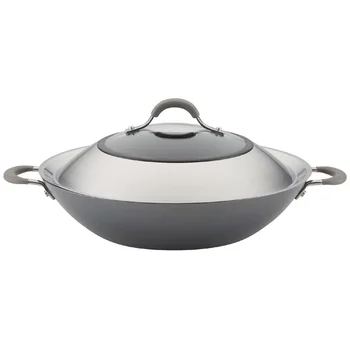
First, I own a standard non-stick wok, the Circulon 14-inch that I purchased on Amazon. Non-stick cookware is known for its convenience and effortless clean-up and its smooth surface allows for easy food release. However, it is important to note that non-stick cookware has its limitations, particularly when it comes to high heat cooking methods. While non-stick pans and pots are ideal for delicate foods like omelets, scallops and fish fillets, they may not be the best choice for searing or broiling. The primary reason for this is that most non-stick coatings are not designed to withstand extreme heat which can degrade the non-stick coating. So although a decent wok for quick easy meals, this is the wok that I tend to use the least.
Cast Iron
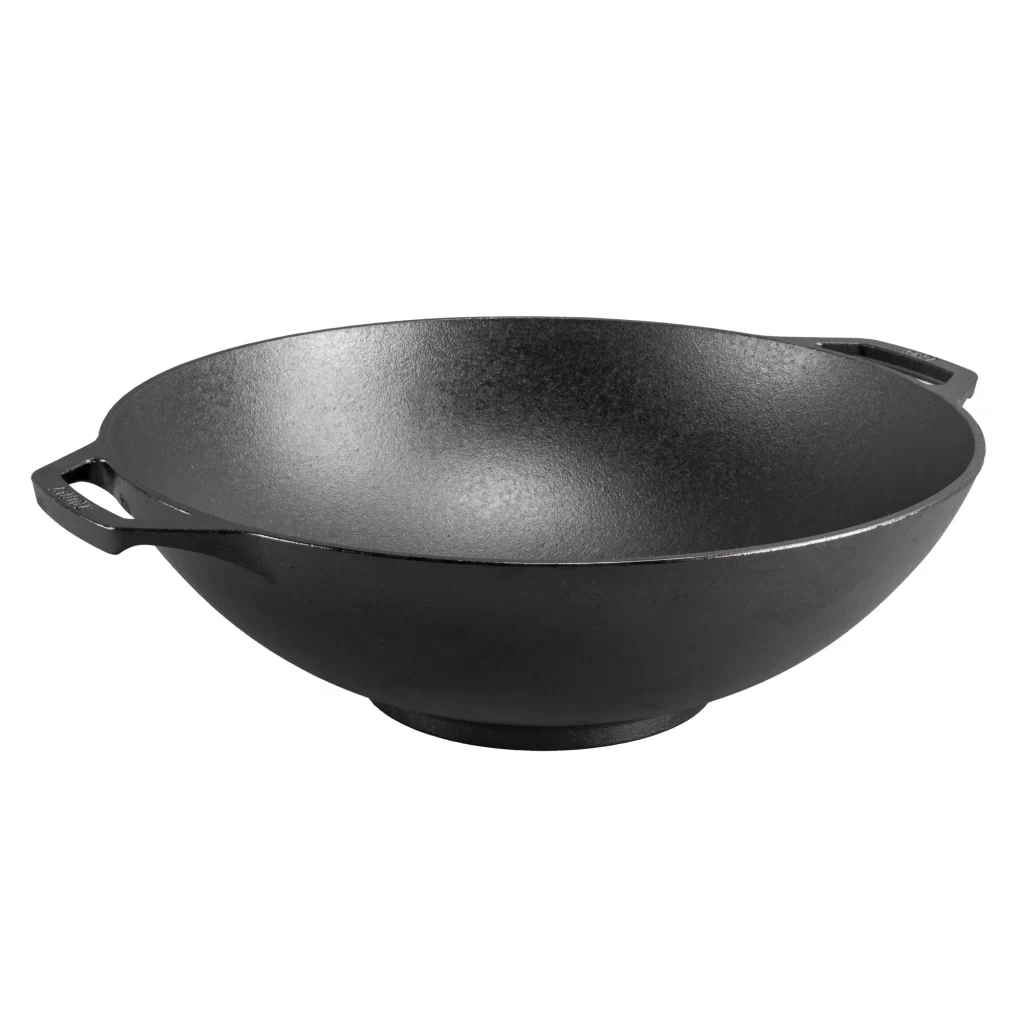
Secondly, I own the Lodge 14-Inch Seasoned Cast Iron Wok. Cast iron pans excel at retaining heat and distributing it evenly, making them ideal for high heat browning. A well seasoned and cared for cast iron pan surface also provides natural non-stick properties, giving you the best of both worlds. The advantage of cast iron is the excellent heat retention. This however can also be a drawback for Thai cooking since some of the final ingredients in wok cooking are added with the heat turned off (things like basil, bean sprouts and green onions.) The residual heat from the cast iron wok, even after the heat source has been turned off, can be too much heat for these delicate ingredients. So although I typically love cast iron, I only use this wok for high heat sturdy dishes like beef and broccoli.
Carbon Steel
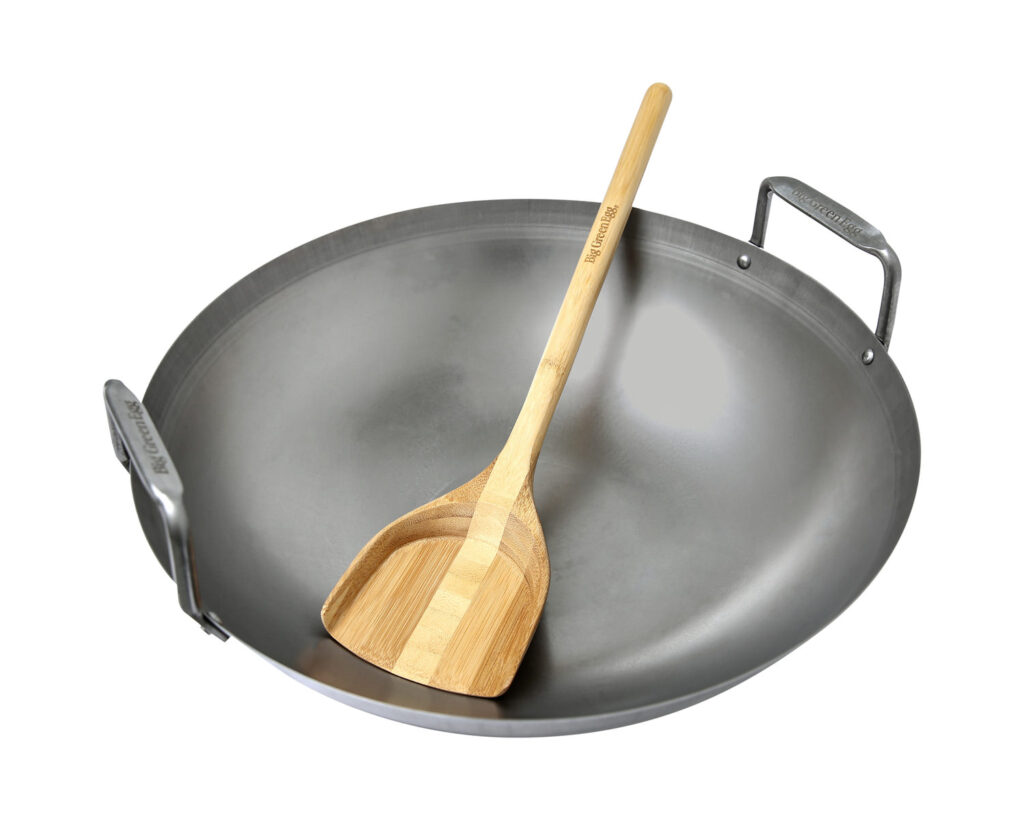
Third, my favorite, is carbon steel. I love the Big Green Egg 18-inch Carbon Steel Wok because of the flat bottom, size, thick carbon steel and Cantonese style handles. The advantage of carbon steel is that it can withstand very high temperatures, however cools quickly when removed from heat. This is ideal for almost all Thai stir fries including recipes with delicate items such as Holy Basil Stir Fry Pad Kra Prow. It’s also much lighter than cast iron. However like cast iron, it does need proper care or if will rust. There are many youtube videos about seasoning your carbon steel pans. Once you get the hang of it, it’s really not a lot of trouble at all. I use this wok for 90% of my Thai cooking.
Handle Style
Another thing to note is all of my woks are Cantonese style (with two small side handles) rather than northern style (which has a long handle and sometimes small handle on opposite side.) This is simply for easy of storage. Although the long handle woks are easier to find and may make the wok easier to manage, the storage can be awkward especially with oversize woks.
Shape
When it comes to choosing between a round bottom wok and a flat bottom wok, there are a few factors to consider. A round bottom wok is commonly used in Asia and Asian restaurants. The curved shape allows for excellent heat distribution and the creation of a “hot spot” in the center of the wok making it ideal for searing meat. However, a round bottom wok requires a specialized wok ring to stabilize it on a stovetop and are not suitable for electric or induction stoves. On the other hand, a flat bottom wok offers more convenience and versatility as it is designed to sit directly on a flat cooking surface. Flat bottom woks also tend to have a larger cooking surface compared to their round counterparts, allowing for more ingredients to be cooked simultaneously. This is especially useful when preparing meals for larger groups or when making one-pot dishes.
Wok Spatula
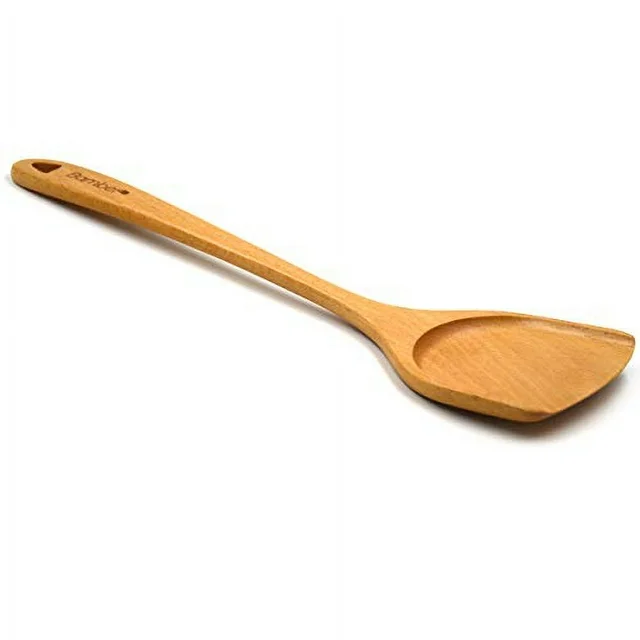

The wok spatula, also known as an Asian spatula, is a kitchen utensil commonly used in conjunction with a wok. It is typically made of metal or wood with a long handle and a wide, flat blade. The blade is usually thin and flexible, allowing for easy flipping, stirring, and tossing of ingredients in a wok. The long handle allows for a comfortable grip and keeps the user’s hand away from the heat source. With a non-stick wok, you will want to use a wood spatula like the Bamber Wood Spatula to avoid scratching the non-stick surface. With cast iron or carbon steel wok however, a metal spatula such as the AOOSY Stainless Steel Spatula is preferred. Both can be purchased on Amazon along with countless other options.
High Heat Burners
One of the biggest issues that home cooks run into when attempting Thai cooking is the heat output limitations of their home stove. The typical BTUs (British Thermal Units) for a home stove vary. Gas stoves usually have BTU outputs ranging from 5,000 BTUs to 10,000 BTUs. Some very high end “professional” type home stoves will go as high as 20,000 BTUs. Electric stoves typically have a lower BTU output with each burner usually ranging from 1,200 BTUs to 2,500 BTUs.
Commercial kitchen stoves in comparison typically have burners ranging from 25,000 to 35,000 BTUs, while a high-powered range designed for heavy-duty cooking can reach up to 60,000 BTUs per burner.
This difference in BTUs is the reason home cooks often struggle to get proper sear and char in their home cooking. This is one reason that many Thai recipes recommend cooking in very small batches. Another work around that I have found works very well is butane or propane powered burners. I have both. One for everyday cooking, and one for large group gatherings.
Butane Stove
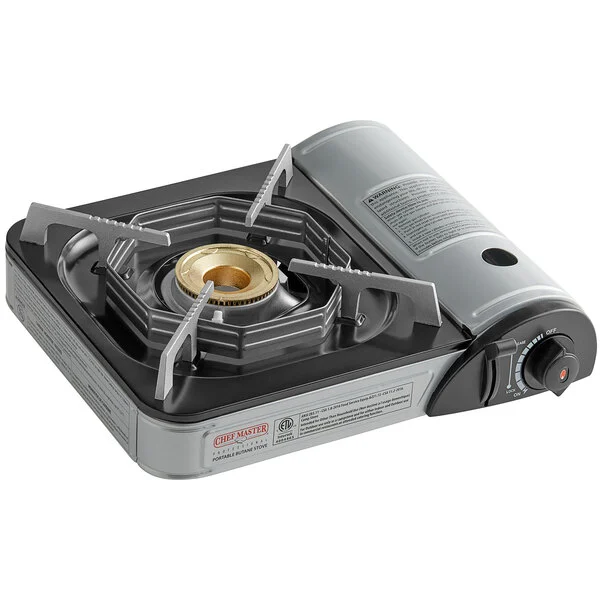
For everyday cooking when I need a higher heat source than my stove can deliver, I use a Chef Master Portable Butane Stove. This little stove can kick out 15,000 BTUs. It’s also portable, which I find useful for camping and tailgating. The stove runs on small butane canisters which can be found at most hardware stores. This can also be used for a fun home hot-pot party
(See my Thai Hot Pot Post for more details.)
Propane Burner
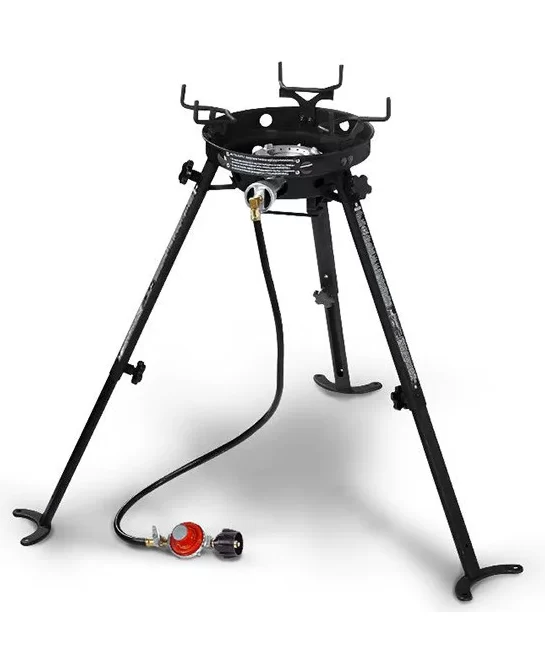
For large outdoor parties and SERIOUS cooking, I also have a 65,000 BTU Eastman Propane Burner. This gets extremely hot and allows me to cook very large quantities quickly. Note this is propane and can only be used outside. Not everyone will need a burner like this, but if you do a lot of cooking for a crowd, I highly recommend you look into a high heat propane burner.
Flat Top Griddle
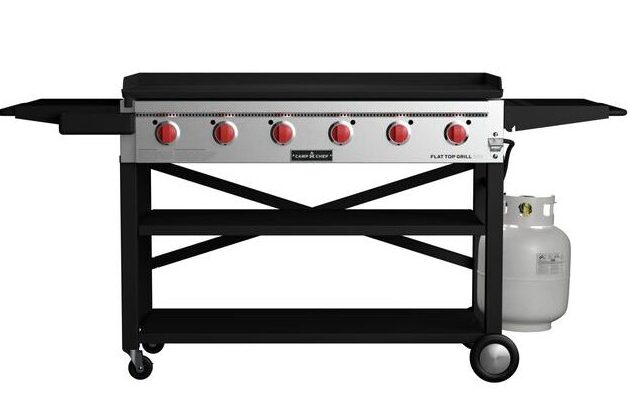
Another cooking item a serious Asian cook might want to consider is an outdoor flat griddle. Two popular brands are Blackstone and Camp Chef. I have the 48″ Camp Chef Griddle which has six 12,000 BTU burners. Again, this is of course absolutely not necessary for everyday cooking, but something to consider if you often cook for large groups. They also come in smaller models and table top versions. This isn’t just for Asian cooking but also great for everything from burgers to pancakes.
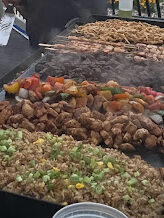
Flat top griddles are great for hosting a hibachi style dinner with a big group of friends! The huge surface area makes it possible to make friend rice, noodles, chicken, steak, shrimp and vegetable all at one time! Easier than you would think!
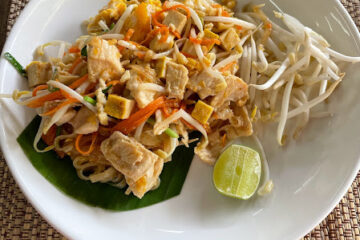
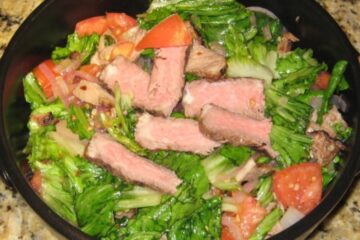
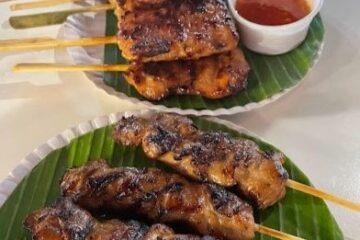
0 Comments